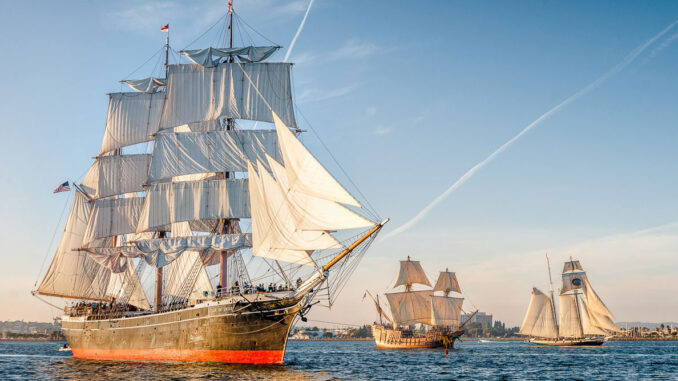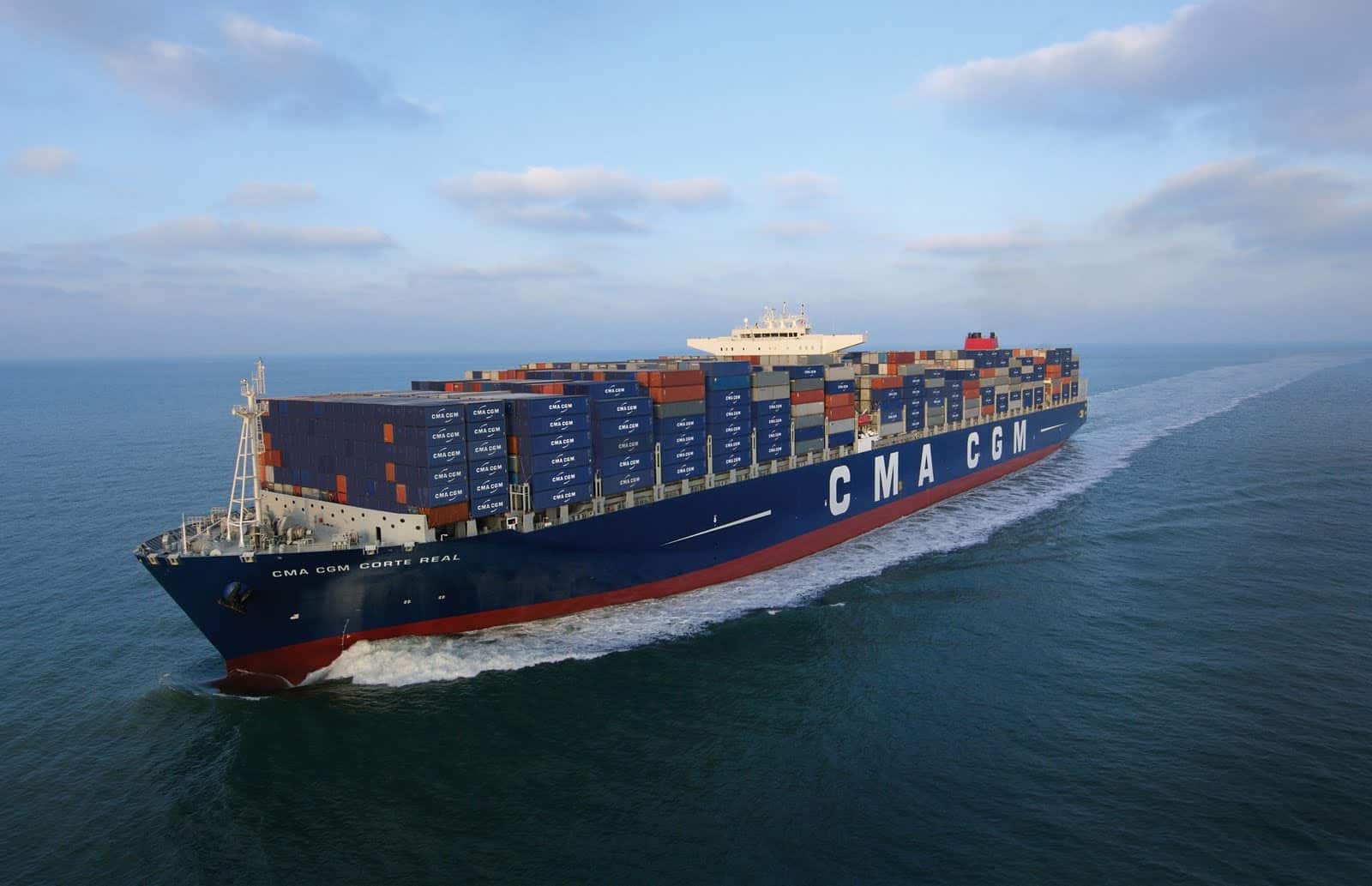
Ships have played a central role in human history, enabling exploration, trade, and cultural exchange across vast oceans. Today, ships remain at the heart of global commerce, maritime tourism, and naval operations. Whether we’re looking at gigantic cruise liners, robust cargo vessels, or futuristic eco-friendly designs, the world of ships has undergone a remarkable transformation. In this blog post, we’ll dive into the evolution of modern ships, exploring their historical roots, technological breakthroughs, and the exciting future that lies ahead.
Below, we’ll cover different eras of ship design, highlight key innovations, and discuss sustainability trends that are shaping the maritime industry. This post is SEO-optimized with relevant keywords—like “modern ships,” “shipbuilding,” “maritime history,” and “sustainable shipping”—to help you find all the information you need. So, let’s set sail on this journey through time and technology!
1. The Historical Foundations of Shipbuilding
Ancient Beginnings
The story of modern ships begins with the earliest civilizations, where simple wooden boats were used for fishing, transportation, and trade. Ancient Egyptians built reed boats to traverse the Nile, while Phoenicians crafted sturdy vessels that sailed across the Mediterranean Sea. Over time, improvements in ship design such as the addition of sails, rudders, and better hull shapes expanded the range and efficiency of seafaring.
Medieval Advancements
During the Middle Ages, ships became larger and more complex. The use of the caravel and carrack designs in Europe allowed explorers like Christopher Columbus to embark on transatlantic voyages. These vessels featured multiple masts, lateen sails, and improved hull construction, making them faster and more maneuverable than their predecessors. Through these innovations, the foundations of modern shipbuilding were laid, heralding an era of global exploration.
Age of Sail
The Age of Sail (16th to 19th centuries) saw significant leaps in naval architecture. Multi-deck warships, such as the English galleon, played critical roles in naval battles and the defense of trade routes. Merchant ships grew larger to carry valuable cargo, while explorers traveled uncharted waters in search of new territories and resources. The integration of better rigging systems and hull reinforcements reflected the growing expertise of shipbuilders, who were constantly seeking ways to maximize speed, stability, and cargo capacity.

2. The Transition to Powered Vessels
Steamship Revolution
One of the most pivotal developments in maritime history was the introduction of steam-powered engines during the 19th century. Paddle steamers and, later, screw propellers replaced the reliance on wind, allowing vessels to maintain a consistent speed regardless of weather conditions. Iconic examples like the SS Great Britain and the RMS Titanic showcased the growing confidence in shipbuilding technology.
The transition to steam not only revolutionized travel times but also spurred new shipping routes, enabling faster mail delivery, passenger crossings, and commercial exchanges between continents. Ship designs shifted from purely wooden hulls to iron and steel frameworks, improving durability and reducing risks at sea. This period also ushered in new regulations and safety protocols as maritime travel became more accessible and demanded greater oversight.
Diesel Engines and Beyond
By the early 20th century, diesel engines provided a more efficient alternative to steam power. Diesel-powered ships offered better fuel economy, lower maintenance costs, and higher reliability. They quickly became the standard in commercial shipping, from tanker fleets to cargo liners. This shift to diesel engines was accompanied by ongoing refinements in hull design, navigation systems, and onboard amenities.
Over time, the maritime industry witnessed a continuous search for energy efficiency and environmental sustainability. Steam turbines gave way to gas turbines in some specialized vessels, such as naval ships and high-speed ferries. Meanwhile, the use of electric propulsion began to gain traction in certain vessels, setting the stage for the green shipping initiatives we see today.
3. The Rise of Modern Cruise Liners
Floating Resorts
Modern cruise liners, often referred to as “floating resorts,” epitomize luxury, comfort, and grandiosity. Starting in the mid-20th century, ocean liners gave way to specialized cruise ships designed for leisure rather than simply transporting passengers across the Atlantic. Companies like Cunard and Royal Caribbean introduced extravagant onboard amenities—spas, multiple restaurants, theaters, and even waterparks. These features turned ships into vacation destinations in their own right.
Gigantic Proportions
Over the decades, the size of cruise ships has grown tremendously, with some vessels exceeding 200,000 gross tons. These massive constructions demand advanced marine engineering to manage propulsion, wastewater treatment, and onboard power generation. State-of-the-art navigation systems, automated stabilizers, and cutting-edge radar technology help captain and crew ensure passenger safety despite the vessel’s enormous dimensions.
Environmental and Safety Considerations
Cruise lines now face increasing pressure to address sustainability and reduce their carbon footprint. Modern ships incorporate emission-reducing measures, including cleaner fuel alternatives like liquefied natural gas (LNG) and advanced exhaust treatment systems. Safety measures have also evolved, with mandatory safety drills, improved firefighting systems, and technologically enhanced evacuation protocols—lessons partly learned from historical incidents like the RMS Titanic’s insufficient lifeboats.
:max_bytes(150000):strip_icc()/TAL-carnival-celebration-CARNIVALSHIPS1223-1e1feaf195964a5d912029893bfaa129.jpg)
4. Innovations in Cargo and Commercial Shipping
Containerization
A game-changer for global trade was the adoption of containerized shipping in the 1950s and 1960s. Standardized containers allowed goods to be easily transferred between ships, trucks, and trains, dramatically reducing loading times and costs. This shipping revolution turned ports into thriving logistics hubs, streamlining global commerce and fueling economic growth.
Automated and Smart Ships
Today, the commercial maritime sector is witnessing a trend toward automation and digitalization. Smart ships equipped with advanced sensors and communication systems can optimize routes, manage fuel consumption, and enhance safety. Some prototypes even explore remote or autonomous operation, although legal and regulatory challenges remain. The shift towards digitization, data analytics, and the Internet of Things (IoT) exemplifies how technology is reshaping ship design and operations.

5. Sustainability and Future Trends
Green Technologies
As environmental concerns intensify, shipbuilders are focusing on greener technologies to reduce emissions, lower fuel consumption, and minimize ocean pollution. Among these innovations are LNG-powered engines, hydrogen fuel cells, battery-electric propulsion, and wind-assisted systems like rotor sails or solar panels. Although these solutions are still emerging, they represent a significant step toward sustainable shipping.
Recycling and Circular Economy
The maritime industry also faces the challenge of end-of-life ship disposal. Traditional scrapping processes often take place in unregulated facilities that pose hazards to workers and marine ecosystems. However, some forward-thinking companies are adopting more responsible ship-recycling methods, ensuring valuable materials like steel are reused and pollutants are managed safely.
3D Printing and Modular Construction
To cut costs, shorten construction time, and improve design flexibility, some shipbuilders are experimenting with 3D printing and modular construction techniques. By producing large sections of a vessel offsite, builders can streamline assembly processes and respond quickly to market demands or custom requirements. These approaches also help incorporate new materials that enhance durability and reduce weight, leading to more efficient ships overall.
Autonomous Shipping
A topic of significant debate is the concept of fully autonomous ships—vessels that can navigate and operate without human crews. Proponents argue that automation can increase safety by minimizing human error, reduce labor costs, and optimize route planning. However, skeptics point to the complexity of maritime environments, cybersecurity threats, and the importance of human judgment in emergency situations. While pilot projects exist, widespread adoption of autonomous shipping is still on the horizon.
6. The Importance of Ports and Infrastructure
Evolving Port Facilities
As modern ships get bigger, ports must adapt. Deeper harbors, stronger piers, and larger cargo-handling equipment are crucial to accommodate mega-vessels. Smart port technology, including automated cranes and real-time tracking of cargo, minimizes turnaround times and reduces congestion. These improvements lower costs for shipping lines and ultimately benefit global consumers by making goods more affordable.
Port-City Relationships
Ports have significant impacts on local economies, providing jobs and fostering trade. However, they can also introduce challenges, such as congestion and environmental pollution. Forward-looking municipalities are working hand in hand with port authorities to plan sustainable expansions, incorporate green buffer zones, and invest in technologies like shore power (electrical connections that allow ships to turn off their engines while docked). Such efforts help balance economic growth with ecological stewardship.
7. Conclusion: Navigating the Next Wave of Ship Innovation
From ancient wooden boats to modern ships equipped with AI-driven navigation systems, the journey of shipbuilding reflects humanity’s endless curiosity and quest for progress. Today’s maritime industry balances tradition and innovation, integrating centuries-old naval architecture principles with cutting-edge engines, hull designs, and sustainability measures. As the world becomes increasingly interconnected, shipping will remain vital to global commerce, cultural exchange, and tourism.
Looking toward the future, challenges like climate change, resource scarcity, and cybersecurity threats demand ongoing adaptation. Whether it’s through green ship technology, more efficient logistics, or the pursuit of automation, the maritime sector continues to blaze new trails in engineering, operational safety, and environmental responsibility. For enthusiasts eager to learn more, or for those curious about the next generation of cruise liners or cargo giants, one thing is clear: the future of ship design is teeming with potential, and the waves of innovation show no sign of receding.
By understanding the past and embracing the possibilities of tomorrow, we can ensure that modern ships continue their legacy as gateways to discovery, economic growth, and international collaboration. Indeed, the world’s oceans connect us all—and as new technologies propel us forward, we’ll see even more remarkable transformations in the maritime realm. Safe travels, and may the winds of innovation forever fill our sails!

Leave a Reply